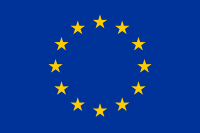OpenHeritage Glossary
#OHglossary Identifying and clarifying keywords in OpenHeritage
Fingerprint
The piece of text below is a shortened, hashed representation of this content. It's useful to ensure the content hasn't been tampered with, as a single modification would result in a totally different value.
Value:
d9785858f973b1a1884790cc515f0b0a65c73143d4908bfce8caf494e51916f4
Source:
{"body":{"en":"<p>Crowdsourcing or citizen science is the activity of giving tasks via internet to the general public, which contribute to research or educational interest related to cultural heritage collections or knowledge. Crowdsourcing projects aim at generating or/and processing content, such as transcribing manuscripts or oral interviews, classifying objects, annotating documents, geotagging, identifying people and objects on the photos. However, crowdsourcing is more than just a framework for creating content. It allows building a community of interested individuals who are ready to work towards a specific aim.</p><p>Crowdsourcing is based on the principle of “the wisdom of crowds,” according to which under theright conditions, crowds can be remarkably intelligent (Surowiecki, 2004) . Many modern popular online services, such as Wikipedia, Google Translate, Google Maps, and Trip Advisor, are based on this principle. Another foundation of crowdsourcing is the concept of participatory culture and a focus on working towards “a shared, significant goal or research interest” together with the online community (Ridge et al. 2014, 2) . The principles of participatory culture, public engagement, and establishing a shared goal with the community are also fundamental principles in the OpenHeritage project, which makes crowdsourcing relevant for the latter.</p><p>Crowdsourcing allows cultural heritage organizations to obtain new information, add to the existing collections, and create new knowledge. Crowdsourcing can contribute to sharing knowledge, presenting and promoting heritage collections and organizations. Creating online communities is another crucial benefit of embracing crowdsourcing. Crowdsourcing can foster better engagement with the public and establish shared responsibility for heritage assets between heritage experts and the public. Crowdsourcing projects can also contribute to reach some socially relevant objectives such as gaining new software skills and online communication experience, and provide an opportunity for socializing.</p><p>Crowdsourcing can be a powerful tool for engaging the public through online participation. However, it has some limitations and side-effects. Although volunteers usually do not get any monetary compensation, crowdsourcing projects require resources to set up and run a website, and also to communicate continuously with the online community. Special studies demonstrated that it is crucial to invest in website design, create clear user manuals, and craft convincing texts explaining the social or academic significance of the project. Crowdsourcing is not about having the job done for free, but rather being open to new ideas and willingness to do things for and with the public.</p><p>Using unpaid volunteer work raises concerns about the ethical side of crowdsourcing. Is it acceptable to use free work of the people who could instead sell their labor for money, isn’t it exploitation? Several studies demonstrated, that volunteers usually have a combination of intrinsic and extrinsic motivations, so they benefit from crowdsourcing in many non-monetary ways.</p><p>Some heritage experts are skeptical about crowdsourcing because of the questionable quality of the results. However, there are several efficient controlling mechanisms, such as having different volunteers perform the same microtask. Another option is to engage experts at the final stage of the task so that they can check the quality of the results and request a rework if necessary. Practice shows that well-designed crowdsourcing tasks result in a high-quality outcome. The classical definition of crowdsourcing says that it is a job done by “an undefined generally large group of people in the form of an open call” (Howe and Robinson 2006) . In practice, it is a little group of enthusiasts – so-called “supercontributors” – who does most of the work. The challenge is how to find contributors who are interested in the topic and how to engage them. Moreover, if for some reason a “supercontributor” withdraws from the project, it significantly reduces the speed of the progress.</p><p>Engaging public through the internet requires open access to the materials to make it available for the volunteers. Therefore, only those materials can be used whose online publication does not violate copyright regulations. The results of crowdsourcing projects should also be available online.</p><p>Democratizing heritage by increasing public participation is perceived by some heritage experts as deprofessionalization and amateurization of the cultural heritage domain. Successful crowdsourcing projects are grounded on shared responsibility, trust and collaboration between heritage organizations and the public. Therefore, some heritage organizations also fear to lose control over the process of work with their collections. Margret Domroese and Elizabeth Johnson argue, that “the only way to avoid an incumbent neoliberal form of heritage democratization is to let go of the perceived necessity to protect heritage in a traditional sense” which they see in the form of accepting the concept of critical heritage (Wells 2017) .</p><p>For adaptive reuse of historical buildings, one can include enchanced sense of crowdsourcing participation, such as oral interviews or storytelling (which help to uncover and document the layers of tangible and untangible heritage of the building, to improve communication in the community-building process, and to find the best solutions for future design, functions, and scenarios); creating inventories, surveys, and mapping of historic values and sites of locality; sharing photographs and objects which can function as memory triggers and important sources for historical and architectural research. </p><p>Reference list</p><p>Domroese, Margret C, and Elizabeth A Johnson. 2017. \"Why watch bees? Motivations of citizen science volunteers in the Great Pollinator Project.\" Biological Conservation 208:40-47.</p><p>Ferriter, Meghan. 2016. \"Inviting engagement, supporting success: how to manage a Transcription Center.\" Collections 12 (2):97-116.</p><p>Howe, Jeff, and Mark Robinson. 2006. \"The rise of crowdsourcing.\" Wired magazine 14 (6):1-4.</p><p>Ridge, Mia, Shelley Bernstein, Lucinda Blaser, Tim Causer, Melissa Terras, Sharon Leon, Michael Lascarides, and Ben Vershbow. 2014. Crowdsourcing Our Cultural Heritage, Digital Research in the Arts and Humanities: Routledge. Surowiecki, James. 2004. The Wisdom of Crowds: Why the Many Are Smarter Than the Few and How Collective Wisdom Shapes Business, Economies, Societies and Nations.</p><p>New Doubleday - Abacus. Wells, Jeremy 2017. \"What is Critical Heritage Studies and how does it incorporate the discipline of history?\" Conserving the Human Environment. https://heritagestudies.org/index.php/2017/06/28/what-is-critical-heritage-studies-and-how-does-it-incorporate-the-discipline-of-history/.</p><p>Wilson, Kimberly. 2016. Exploring the role of design in sustainable adaptive reuse of built heritage. Unpublished PhD Dissertation, Queensland University of Technology. </p>"},"title":{"en":"Crowdsourcing as a tool of adaptive reuse"}}
This fingerprint is calculated using a SHA256 hashing algorithm. In order to replicate it yourself, you can use an MD5 calculator online and copy-paste the source data.
Share link:
Please paste this code in your page:
<script src="https://labs.openheritage.eu/processes/glossary/f/184/proposals/331/embed.js"></script>
<noscript><iframe src="https://labs.openheritage.eu/processes/glossary/f/184/proposals/331/embed.html" frameborder="0" scrolling="vertical"></iframe></noscript>
Report inappropriate content
Is this content inappropriate?




Share: